I have a small flower garden at home that I adore. Periwinkle flowers add beauty to my garden, and there are 12 species that I’ve been nurturing since 2010. Periwinkle plants are low-maintenance and yield beautifully with minimal effort. Seeing their flowers fills my heart with joy. In today’s blog, I will share my experience with these plants. The best time to plant periwinkles is early spring, and they typically grow to a height of 10-12 inches. Knowing a few maintenance tips can be helpful for their care.
 Taking Care of Periwinkle
Taking Care of Periwinkle
Caring for periwinkle involves attention to:
Watering
Light
Soil
Fertilizer
Temperature
If you’re unfamiliar with this flower, my blog provides helpful tips for achieving successful results by nurturing your plants this way.
**What is Periwinkle?**
Periwinkle, a member of the Apocynaceae family, is an herbaceous evergreen plant. Known as Vinca, it blooms in various colors such as white, blue, yellow, red, and purple. These flowers are found worldwide, including Europe and North America, and thrive in USDA hardiness zones 4 through 9. Different varieties bloom at various times of the year, with some flowering in winter and others in summer. Periwinkle is a perennial that prefers partial sunlight and shade, adapting well to both conditions and growing vigorously.
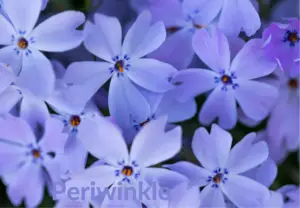
**Beggar Flowers: Attractive and Long-lasting**
Beggar flowers are known for their attractiveness and longevity. The leaves are dark green, elliptic, and 1-2 inches long, arranged oppositely along the stem. This plant serves well as groundcover but can become invasive in certain environments, affecting both people and animals.
**Different Varieties of Periwinkle**
Here are 6 common varieties of periwinkle to consider:
– **’Jekyll White’**: Abundant with white flowers.
– **’Alba’**: Similar to ‘Jekyll White’ but with fewer white flowers.
– **’Azurea Flore Pleno’**: Known for vibrant purple flowers that bloom doubly.
– **’Sterling Silver’**: Noted for deep blue flowers and leaves edged in white.
– **’Lightning’**: A newer variety featuring yellow spots at the center of each leaf.
– **’Moonlit’**: Produces lavender double flowers with occasional yellow variations, though less hardy compared to common periwinkle.
These varieties offer a range of colors and characteristics to enhance your garden landscape.
Light

Vinca thrives in partial sunlight and shade. The intense midday summer sun and evening sunsets can potentially scorch your plants. I’ve planted mine on a balcony that faces North-South, which provides optimal conditions for their growth.
Before planting, it’s crucial to assess the light conditions to ensure your plants receive the right amount of sunlight throughout the day.
The temperature and humidity

of periwinkle plants is 60 -75°F. Prefers night temperatures above 55°F. Plants grow faster above 60°F.
They help to increase beauty in high humidity but they become diseased in high humidity areas.
Water
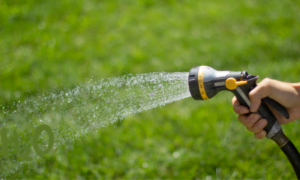
Periwinkle is a drought-tolerant plant. As a result, not much water is needed. Water should be given three days a week so that the soil does not become dry and crusty.
soil
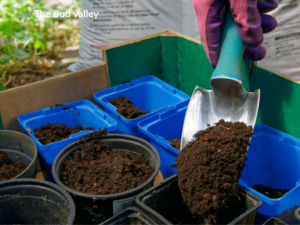
Vinca grows more in sandy loam soil. Humus-rich soil is suitable for periwinkle. Different varieties grow in different types of soil. This plant increases the holding capacity of any soil condition.
Fertilizer

Nitrogen, phosphorus, potassium, and vermicompost fertilizers are crucial for periwinkle plants as they enhance growth and vibrancy. I prefer to feed them with homemade compost, which enriches the soil naturally. Applying fertilizer should be done at least once a month to ensure healthy growth and blooming.
Insects
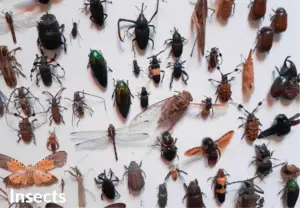
Vinca flowers are susceptible to infestations by aphids and spider mites, especially in damp, wet conditions, which can lead to diseases and eventually plant death. To prevent this issue, a mixture of neem oil and water should be applied occasionally by spraying onto the plants. This helps protect them from these pests and ensures their health and vitality.
Medicine

For centuries, periwinkle has been utilized to treat various ailments. Extracts from the plant are used in medicines for conditions such as high blood pressure, cancer, and diabetes management.
Toxicity
This plant contains toxic alkaloids that can cause severe conditions such as gastrointestinal issues and hallucinatory convulsions. To protect people, especially children and animals, from these risks and to prevent skin irritation, wear gloves when handling the plants.
Height
These plants typically grow to a maximum height of 10-12 inches. However, their branches spread out extensively, reaching much greater heights than the main plant. These spreading branches are known as rhizomes.
How to plant

You can plant periwinkle indoors or outdoors, whether in tubs or recycled plastic bottles, adding vibrant floral colors to brighten up your space. As the plant grows, its stems spread out like a mat, thriving best in shady locations with well-drained soil.
Prepare a 12-inch hole for larger areas and an 8-inch holes for smaller ones when planting, ensuring it’s placed carefully to avoid root damage after transferring from the nursery. Water generously, taking care not to compact the soil.
Type of vinca
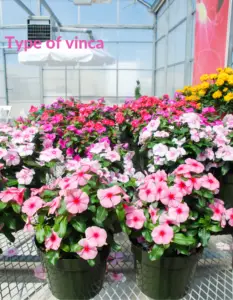
Vinca Minor
Vinca minor, a low-growing periwinkle, reaches heights of up to 6 inches (15 cm). Its leaves are smaller than those of Vinca major, typically 1-2 inches long (2-5 cm) and ½-1 inch wide (1-2.5 cm). Depending on the cultivar, its flowers range in colors from purple and blue to white, blooming in early spring and sometimes again in fall. Vinca minor is commonly used as ground cover in smaller spaces.
Vinca Major
Vinca major is a larger, sometimes invasive periwinkle plant that grows up to 24 inches (60 cm) tall. It features large, dark green leaves measuring up to 3 inches long (7 cm) and 1 inch wide (2.5 cm). Its flowers are 1 to 2 inches across (2 to 5 cm) and bloom prolifically in early spring through summer. This plant is suitable for larger areas and helps prevent erosion.
Hardiness
These two varieties of vinca tolerate different temperature ranges. Vinca minor is hardier and can withstand higher temperatures, whereas Vinca major is more tolerant of lower temperatures.
Periwinkle plants can enhance the beauty of any garden with their bright leaves and colorful flowers. When planted in elevated tubs, their trailing stems create a cascading effect, adding vibrancy to any yard or balcony. However, it’s essential to be aware of their potentially invasive nature and check soil quality before planting, ensuring they thrive in the right conditions.


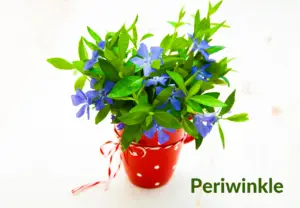 Taking Care of Periwinkle
Taking Care of Periwinkle